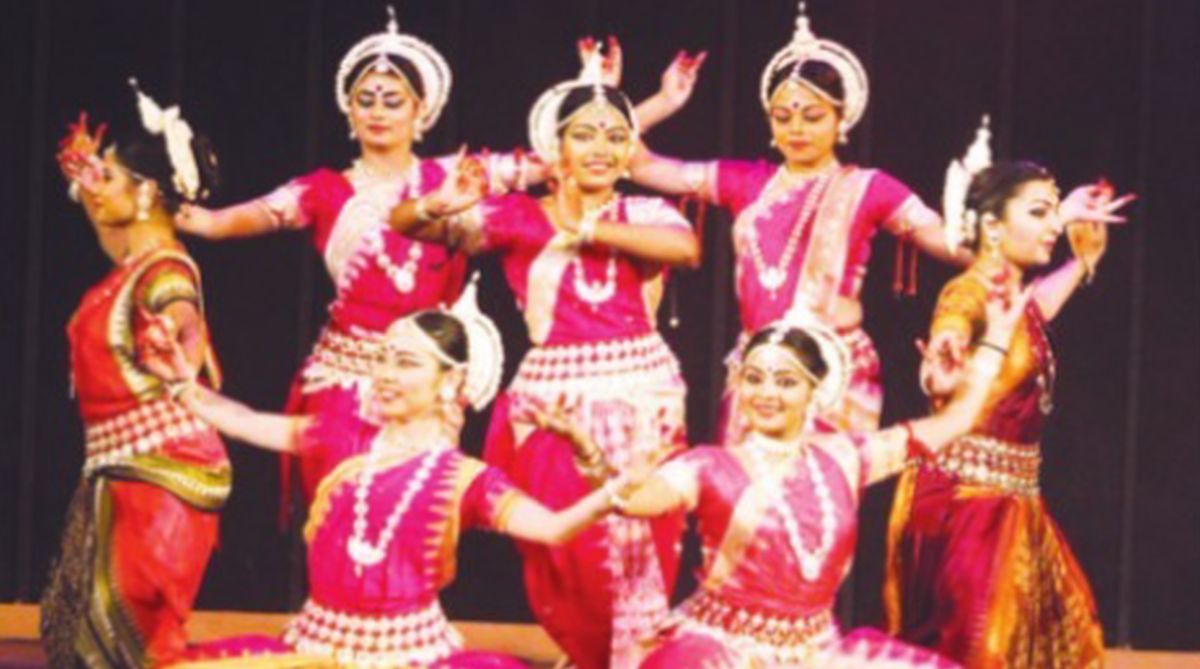Heritage walk explores lighthouse, gurdwara at abode of Lord Jagannath
The sixth edition of Puri Heritage Walk (PHW) explored the maritime marvel of the lighthouse town and a historic gurdwara at the pilgrim town, the abode of Lord Jagannath.
A young Odissi dancer to watch out for is Diptimayee Sahoo and she recently performed with great aplomb in Bhubaneswar.

Group dancers of Debaprasad Das' style of Odissi.
Tridhara Bhubaneswar and Debaprasad Kala Tirtha, Brahmapur, celebrated the third season of Ekaika, which saw Odissi dancer Diptimayee Sahoo perform at Rabindra Mandap in Bhubaneswar. Sahoo performed some memorable choreographic works of the late Debaprasad Das, which were taught to her by Guru Gajendra Panda. The music composition of the pieces was by Ramahari Das and Gopal Chandra Panda.
What better start could there be than commencing with Krishna Vandana in the holy land of Lord Jagannath? Unlike an Odissi performance where a replica of Lord Jagannath is placed on the left side of the proscenium stage, young Sahoo squatted before a stone carving of Lord Krishna, lost in bhakti-sringar or devotional love thoughts. Bhaje braje mandanam/samastha papa khandanam sang the vocalist as the performer praised her lord, who washes away the sins of people and relieves the seeker’s sorrow by implanting joy in its place. This rather longish stuti was choreographed by Panda for those in an ashram.
Advertisement
Such is the appeal of the piece that the dancer could not resist the temptation of choosing a shortened version of it as a Mangalacharan for this performance.
Advertisement
Notwithstanding her dance steps in the perfect Odissi style of Guru Debaprasad Das, a certain sharpness will have to be developed by her to be counted among the top handful, considering the number of aspirants in the field today.
Energetically, Sahoo covered the huge stage, dramatising the different activities of Krishna from his birth to youth, not forgetting his brave activities like the annihilation of Kamsa as Narasimha Avatar, bowing down to his lotus feet with intense emotion. Having imbibed the typical chowks and tribhanga stances of Odissi, she is truly poised to take off. The recital started with a positive note of joy.
The next piece, Sabhinaya Pallavi, was unique in the sense that it was seamlessly merged with an abhinaya piece, Ki dekhili aaje Jamuna Kule. Imagine the nayika —in this context Radha — who was on the banks of the Yamuna during sunrise to pay her obeisance to Surya, when lo and behold, she was numbed by what she saw. Entranced and enamoured by Krishna, she had forgotten to be abashed and afraid, and indulged in dancing rasleelawith him, in tribhangi poses typical to Odissi.
Indian aesthetics have categorised all human emotions in nine broad divisions called nava rasa, which has caught the imagination of choreographers.The nava rasa choreographed by Guru Debaprasad Das is a popular number followed and danced by young and veterans alike. The motifs for each of the rasas as envisaged by the creative choreographer consisted of cooing love birds; blooming lotuses with honey bees hovering over them; fish in romance with the ocean; peacocks with wings spread for Srinagar Ras. The motif used for showing heroism was Rama’s stringing of the bow to win the hand of Sita. An injured bird gave rise to KarunyaRasa. The other rasas were also described through familiar motifs. Bibhatsa rasa, showing goddess Kali devouring flesh and blood was gruesome, as it was meant to be. The piece was quite a challenge, because it lends itself to comparison with other performers. However, Sahoo stood her ground in abhinaya.
One of the epic episodes immortalised by poet Jayadeva was the pathos created by Krishna’s departure from Vrinadavan. The pangs of separation immobilised Radha. The astapadi, Rase haririha bihita bilasamwas expressive of the heroine’s deep feelings. This abhinaya piece is a stellar one among the written works of the poet and was emoted with lyrical beauty in the vocabulary of Odissi.
Moksha, which is always the last number performed in an Odissi repertoire, was a short piece, which combined the folk steps of Prhalada Nataka, Sakhi Nata and Ghumura Nata in praise of Krishna. The signature style of Debaprasad Das was to imbibe a typical Odiya flavour. He brought in very traditional social practices of the Oriyas of those times and imbibed it into his style. He was the first guru, who was responsible for getting Odissi noticed outside the state when he accompanied Priyambada Mohanty Hejmadi for the Inter- University Youth Festival. He was also the first guru to go global, when he accompanied Indrani Rahman as her guru.
It was because of Debaprasad Das that Odissi became known worldwide. He believes that while the basic framework of Odissi, like other classical forms, is Natya Shastra, it should also exhibit ethnic elements. According to him, Odissi should include tribal, folk and classical dance forms of Odisha. Hence the name Tridhara —the three streams —which is the name of the institution he had started, now managed by Guru Gajendra Panda, Sahoo’s teacher.
The performer was accompanied by vocalist Binod Chandra Panda and Sangeeta Panda, mardala player Ramachandra Behera, sitarist Swapneswar Chakraborty, flautist Jabahar Mishra and of course her guru, Guru Gajendra Panda on the manjira and ukuta. Guru Banamali Moharana, Dhaneswar Swain and Bijay Kumar Panda composed the rhythm patterns.
Advertisement